Forensic investigation of crime includes the use of scientific methods to study past events for criminal justice delivery, often to reconstruct unknown events associated with a crime scene. Considering the importance of forensic investigation of crimes, including biology, fingerprints, DNA analysis, ballistics, evidence tracing, voice analysis and toxicology, the Department of Forensic Medicine and Toxicology, JSS Medical College, JSS Academy of Higher Education and Research had organised a three-day Forensic Fair from Dec. 19 to 21 at JSS Hospital premises on M.G. Road. This Weekend Star Supplement features some of the important aspects that were displayed at the Fair and identifies the small set of people in Mysuru who are making a difference in the field of forensics.
Foraying into Forensic Science
By B.C. Thimmaiah and Ramesh Kebbehundi
Forensic Science has become an integral part of many criminal cases and convictions, with objective facts through scientific knowledge. The simplest definition of forensic science is any science used within the criminal justice system.
Crime scene investigators and lab technicians use specialised skills and tools to collect, analyse, and present evidence in order to solve a crime or successfully convict the offender. The increased use of scientific methods to collect and examine evidence has led to the closure of many criminal cases that could not be solved through old-fashioned detective work alone. New testing methods are even being applied to cold cases, or cases from many years ago that remain unsolved.
Forensic science can be used to:
- Prove elements of a crime
- Verify or discredit victim or suspect statements
- Identify descendants or suspects
- Establish a connection to a crime or crime scene
In other words, forensic science may prove the existence of a crime, the perpetrator of a crime, or a connection to a crime through examination of physical evidence, administration of tests, interpretation of data, clear and concise reporting and truthful testimony of a forensic scientist.
Considering the importance of forensic science, the Department of Forensic Medicine and Toxicology, JSS Medical College, JSS Academy of Higher Education and Research had organised a three-day Forensic Fair from Dec. 19 to 21 at JSS Hospital parking area on M.G. Road in city.
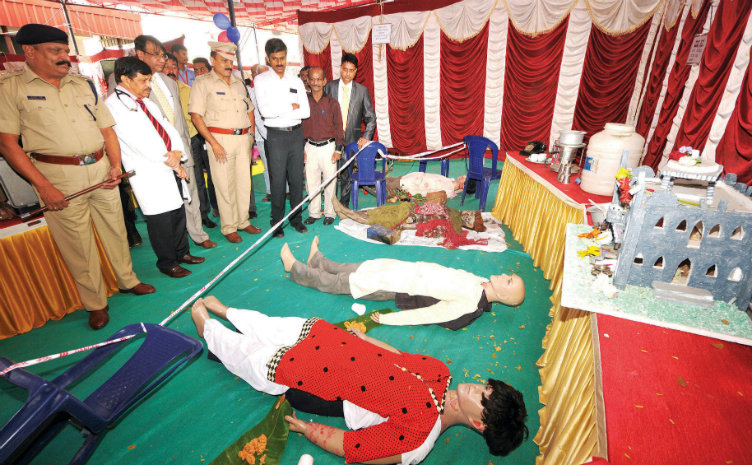
The exhibition was jointly organised in association with Karnataka Police Academy, Mysuru City Traffic Police, Department of Criminology and Forensic Science SBRR Mahajana First Grade College, Poison Information Centre, Department of Clinical Pharmacy, JSS Hospital, JSS Institute of Speech and Hearing, and Department of Food Sciences of Yuvaraja’s College, Mysuru. Snake Shyam had set up a special counter to explain about snake poison and its effects.
The exhibition was a great hit among the public, especially the student community with an average of 1,600 people visiting it every day. Visitors were told about crime scene investigation, adulteration, weapons and their uses, traffic awareness, trauma care, approach to a crime scene, identification of fingerprints, detection of poison, voice identification, audiology, handwriting examination and a recorded video of autopsy.
In all, it was an exhibition to bring crime and investigation closer to people. Some of the aspects of forensics that were dealt at the exhibition are DNA finger printing, comparison of cartridges, dental evidence, trauma, analytical procedures to detect poisons, types of signatures and the way to decipher them, difference between a person hanging himself to death or a hanging that takes place after the person is murdered and importance of blood samples in murders and food adulteration.
Explaining the exhibition to Star of Mysore, Dr. Smitha Rani, Dr. H.V. Chandrakanth, Dr. Arun and Dr. G.B. Aravind said that the Karnataka Police Academy had recreated the types of unnatural deaths through Plaster of Paris models. The models included of murder, food poisoning death, burns, hanging. This apart, there was a display of different types of firearms like pistol, Carbine, revolver, AK 47, INSAS, etc.
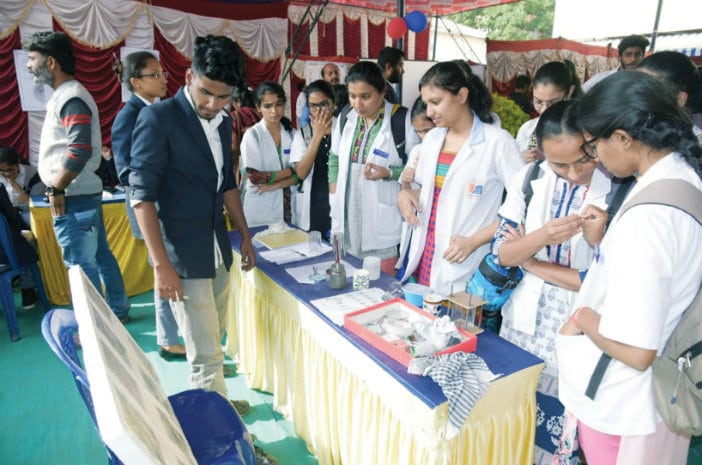
The stall set up by Poison Information Centre, Department of Clinical Pharmacy, JSS Hospital gave information on precautionary measures to be taken in poisoning. The Department of Criminology and Forensic Science, Mahajana First Grade College presented a live demonstration of latent fingerprint testing, identification of fake currency notes and crime scene evidence collection.
Two stalls set up by department of Forensic Medicine and Toxicology, JSS Medical College displayed photographs on trauma, poisonous substances, autopsy findings in different unnatural deaths and their investigations. There was a video demonstration on snakes and information on first aid to be provided in case of snake poisoning by Snake Shyam. Awareness on food adulteration by means of simple tests were displayed by Department of Food Science and Nutrition, Yuvaraja’s College.
Voice Is The Key Here
As voice is a key to a human body, it is also crucial in crime investigation. Criminal Audiology deals with voice and its variations. Every person has a unique voice along with its frequency and modulations. For a layman it may be just a sound but in forensics, it has various aspects.
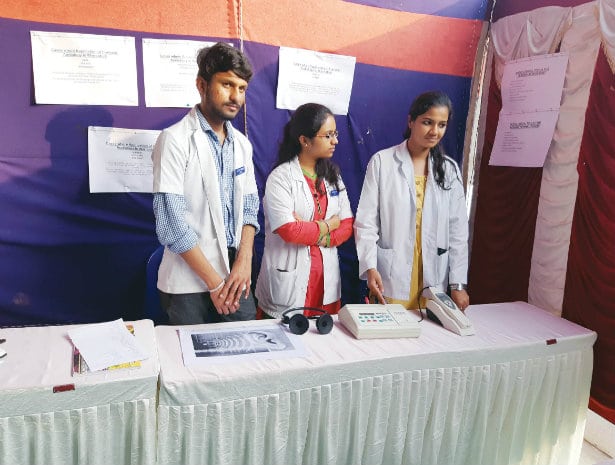
JSS Institute of Speech and Hearing had set up a stall at the exhibition where voice samples could be tested and matched. In the age of politicians saying a thing and denying the same at a later stage and also claiming that his/ her voice has been distorted, technology can be used to uncover facts. Audiology can precisely pin point the modulations in the voice and identify the speaker through comparison.
The stall was managed by S.Y. Aishwarya, M.N. Rajeshwari, Likhit Prasad, Varsha Chowdhury, Harshitha and faculty Harsha. According to them, voice plays a key role in kidnapping cases where the only available clue is voice that has been obtained through phones.
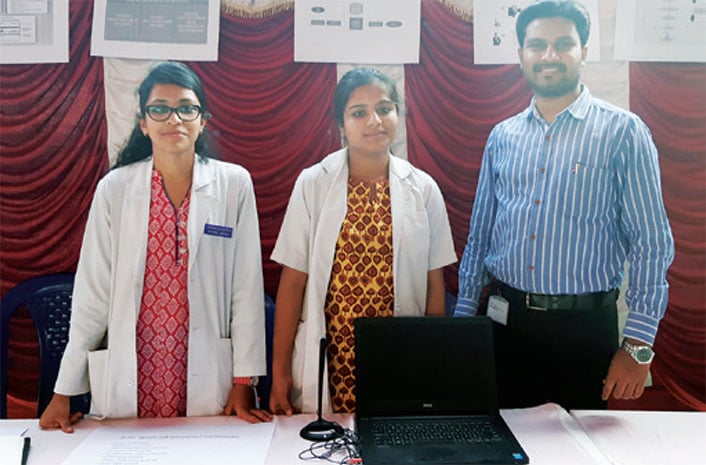
A typical murder scene explained
A bunch of enthusiastic students from B.Sc. Forensic Science were explaining about a typical murder scene. Armed with a model of a body, these students were explaining how a medical examiner is the central figure in an investigation of crimes involving victims.
It is the responsibility of the medical examiner to visit the crime scene, conduct an autopsy (an examination of the body) in cases of death, examine the medical evidence and laboratory reports, study the victim’s medical history and put all that information together that can help in conviction.
When a body is discovered in a lake, stream, river or ocean and the lungs are found to be filled with water, the medical examiner must determine if the drowning occurred where the body was found or elsewhere. They demonstrated how human bite marks also can serve as circumstantial evidence. Such bites may be found upon the body of a homicide victim or within pieces of food or other objects found at the crime scene. Students Varsha Jain, Advika, G.S. Sahana, Durga Vaishnav, Shibin Rehman, Avanthika, Vishak, Nitin, Varsha Krishnan, Amitha and Chandan were part of the team.
Ocular evidence and Forensic evidence
India is yet to make strides in Forensic Science while courts abroad consider forensic evidence as crucial. Moreover, India has a dearth of forensic experts, said Dr. G.B. Aravind, Department of Forensic Medicine, JSS Medical College (in picture extreme right).
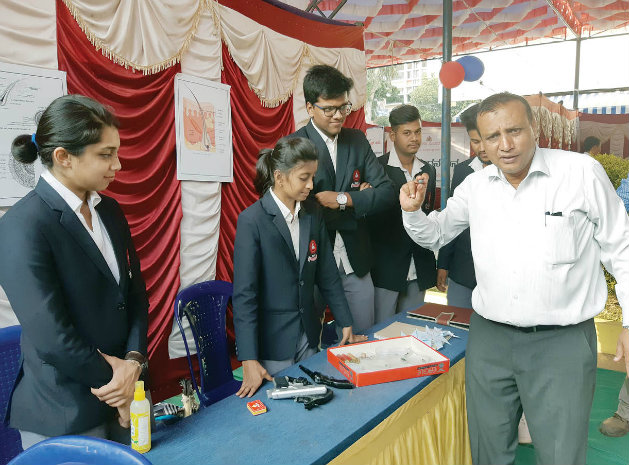
“We in India rely on ocular evidence (eyewitnesses) that might fail or falter after some years in the trial stage. On the other hand, forensic evidence stays for years and can help in judgement delivery even if eyewitnesses are dead or if they turn hostile,” he said.
Realising the importance of forensic sciences, JSS Academy of Higher Education and Research has started a three-year B.Sc. course from this academic year. While forensic science is a mandatory subject for all medical students, the B.Sc. course offers specialisation in forensic branch, he said.
Good Touch and Bad Touch
Child abuse is a society’s scourge. Be it schools or families, young bodies face a lot of abuse from perpetrators. As the exhibition had a lot of child visitors, it was more appropriate to have a stall on child abuse and how to deal with abuse trauma.
Dr. Vidya, Dr. Prashanth and Dr. Abhirami were explaining to young minds how to differentiate between good touch and bad touch. Providing statistics, they showed how child abuse was rampant in India where people considered closest to a family turn out to be child predators. The stall also dealt with trauma care for both parents and children in case of child abuse.

Safety is the biggest concern
Swathi Srinivasa and B.A. Sruti Singavi, students of JSS Institute of Speech and Hearing, though said that the exhibition was informative, felt that a dedicated section on rape cases would have helped in spreading more awareness. “These days we see many rape cases and the expo should have focussed on that. It should have thrown light on rape detection, rapist conviction and justice delivery,” they said.
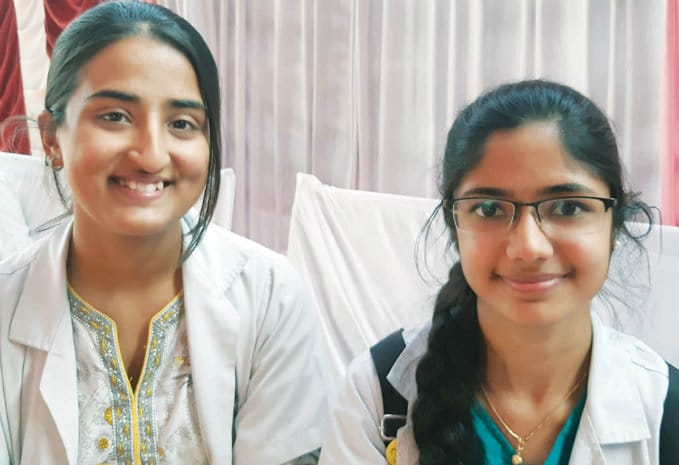
B.A. Sruti Singavi and Swathi Srinivasa
Women are subjected to victimisation and in many cases rapists get away due to lack of evidence. Such exhibitions must throw light on forensic evidence gathering, rape trauma care and of course, the punishment to the perpetrators, they rued.
“How to be safe at homes, offices and workplaces and educational institutions is the biggest concern these days. We learnt a lot in the exhibition and it is in a way a confidence building step,” Swathi said.
DNA fingerprinting and Adulteration
Students of Department of Criminology and Forensic Science Mahajana First Grade College demonstrated how DNA fingerprinting provides an excellent way to analyse blood, hair, and skin or semen evidence found at the crime scene. By using advanced technology methods, a laboratory rapidly can clone, or multiply, the DNA from a tiny sample of any of these substances.
This process produces enough DNA to compare with a sample of DNA taken from a suspected criminal. Faculties K. Raghavendra and Vindhya Madival led the team and the demonstration was done by Arpitha.

Adulteration is a big menace these days where every other food items are adulterated, risking the lives of people, especially children who need nutrition for growth. Realising the importance of adulteration, the department of Food Science and Nutrition, Yuvaraja’s College had set up a special stall where tips to detect adulteration were given to visitors.
Students explained how daily items like Bengal gram, pulses, rava, rice, milk, wheat, pepper chilli powder and tea leaves are adulterated. They also distributed informative handbooks on detection of adulteration at homes. The handbook has been prepared by Dr. R. Shekhara Naik, Head of the Department, Dr. C.S. Devaki, Asim Sabha, Vani Malai and Preeti Kumari. The student team was led by Dr. M.S. Mahesh.
A live demo of post-mortem
In order to educate people on how a post-mortem is conducted in mortuaries, a video demonstration was organised. It is a first-of-its-kind at a fair and an attempt to erase doubts associated with post-mortem. The demo showed features like collecting viscera samples, opening of head, brain, chest, heart, abdomen and other vital organs of a dead person.
Guns on display
One of the crowd-pullers at the exhibition is the section where guns are displayed. Policemen Gnanadeva Tarase and R. Kumar from Karnataka Police Academy demonstrated the operative part of the weapons.
Avtomat Kalashnikova or AK-47: 7.62x39mm assault rifle, developed in the Soviet Union. It can fire 30 rounds and its effective range is 600 yards with a killing range of 300 yards.
INSAS Rifle: INSAS (abbreviation of INdian Small Arms System) is a family of infantry arms consisting of an assault rifle and a Light Machine Gun (LMG). It is a gas operated assault rifle. It can be fired in single round or three-round burst mode. A telescopic sight or a passive night sight can be mounted on it. The transparent magazine can hold 20 rounds.
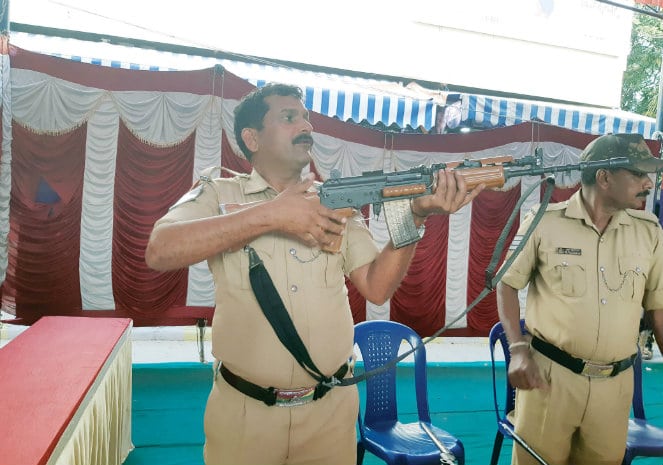
Single Barrel Gun or Self-Loading Rifle: It can fire 20 rounds and has a killing range of 300 yards.
.303 Rifle: A bolt-action, magazine-fed, repeating rifle. It has an effective range of 600 yards with a killing range of 300 yards.
Light Machine Gun: The LMG (Light Machine Gun) has a range of 700 metres, when compared to 400 metres range of INSAS standard and assault rifles. It has a longer and heavier barrel with revised rifling, and a bipod. The LMG version uses 30-round magazines.
9mm automatic pistol: Has a killing range of 50 yards and an effective range of 200 yards. It can fire 13 rounds.
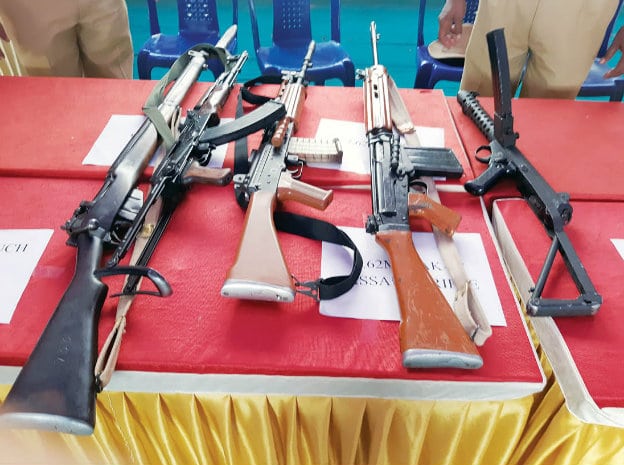
A study on juvenile delinquents
The Department of Forensic Medicine and Toxicology, JSS Hospital, is contributing in its own way by conducting research associated with relevance to Mysuru region. Dr. M. Arun said that the Department had studied, researched regarding juvenile delinquents of Mysuru and Mandya District two years back.
“We studied juvenile homes, juvenile offenders, their behaviours, causes and other aspects. As part of the study, we examined the behaviour aspects of over 750 juvenile offenders and found out that social economic factors are the main reasons for them to take to crime.
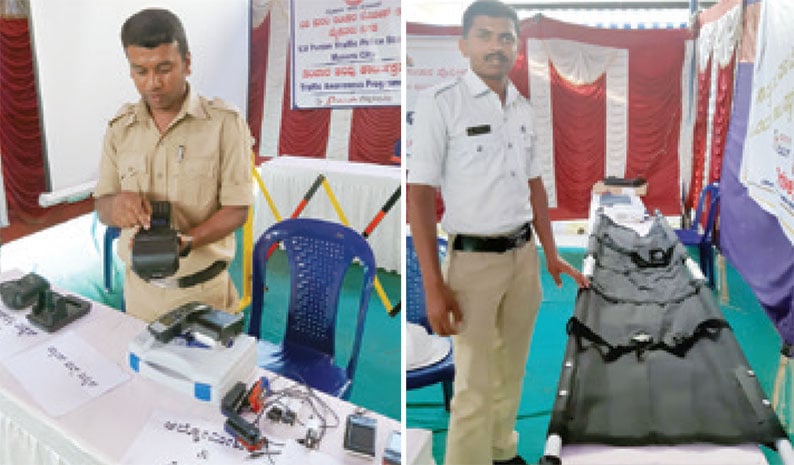
Policemen from Karnataka Police Academy demonstrate hand-held devices to catch traffic offenders and a stretcher to carry the injured.
The research was conducted between 2015 and 2017 and was submitted to the Superintendent of Juvenile Homes of Mysuru and Mandya recommending the government to take corrective measures.
As juvenile delinquency is one most pressing social problems with negative emotional, physical, and economic effects felt throughout the society, the department studied the detrimental impact of juvenile offending and on aspects of the development of effective treatments to them, said Prof Arun.
Assistant professor Dr. Smitha Rani said that department has conducted many post-mortem examinations to help the Police. JSS Hospital is the only private hospital permitted by the government to conduct autopsies after State-owned K.R. Hospital of Mysore, she said.
Head of the Department of Forensic Science and Toxicology, Dr. Chandrakanth said that the department has been holding such forensic fair for the last three years as UGC had directed to sensitise people on the importance of gathering evidence on various crime incidents like rape, murder, accident, poison, burns and hanging.



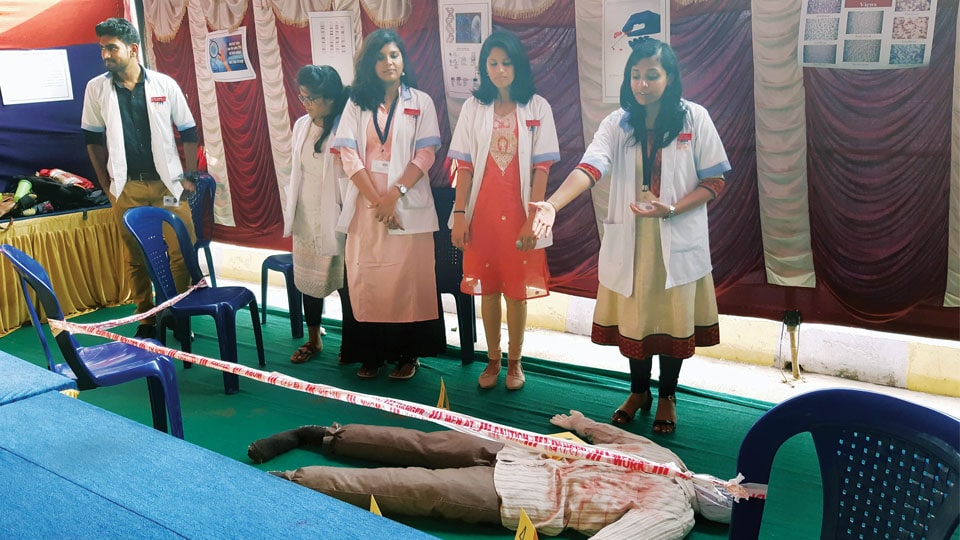




Recent Comments